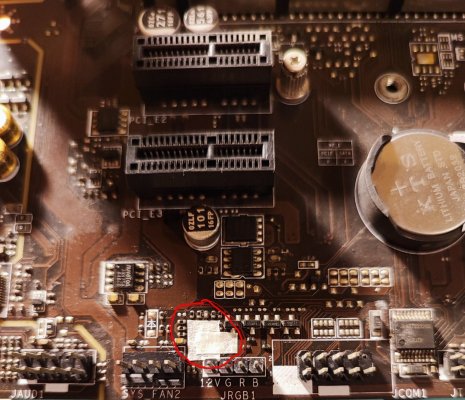dvader
Adept
Hi Everyone,
I just wanted to quench my curiosity as to why a small IC in my MSI mobo burst out of nowhere. Long story short, I have a rendering PC (for my wife) and it works fine. One fine evening I turn it on and boom. My first thought was PSU (it's Corsair RM650x) but Corsair PSUs don't do that (at least not the ones just 3-4 years old). On close inspection, I found a small IC ( TPS25944L per boardview). Now this IC powers the ARGB header and I had nothing plugged into it. The motherboard should work without the IC though (will desolder it) and I will thoroughly test it after I install the new mobo. Any idea why would that happen?
Note: I checked a small SMD cap beside the small IC and it was shorted (don't know if that was before or after the fact).
For ref:


Thanks,
dvader
I just wanted to quench my curiosity as to why a small IC in my MSI mobo burst out of nowhere. Long story short, I have a rendering PC (for my wife) and it works fine. One fine evening I turn it on and boom. My first thought was PSU (it's Corsair RM650x) but Corsair PSUs don't do that (at least not the ones just 3-4 years old). On close inspection, I found a small IC ( TPS25944L per boardview). Now this IC powers the ARGB header and I had nothing plugged into it. The motherboard should work without the IC though (will desolder it) and I will thoroughly test it after I install the new mobo. Any idea why would that happen?
Note: I checked a small SMD cap beside the small IC and it was shorted (don't know if that was before or after the fact).
For ref:
Thanks,
dvader
Last edited:


